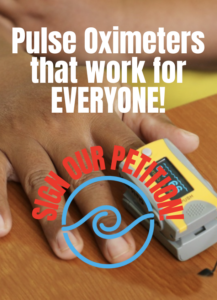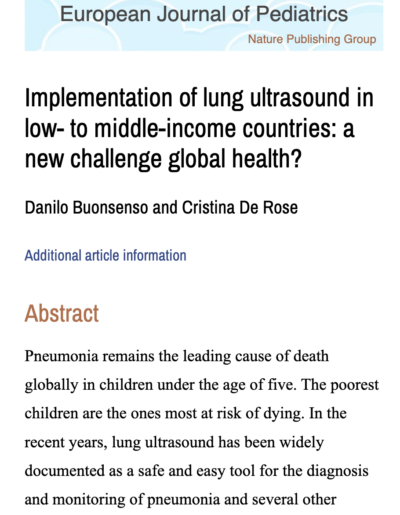
Diagnose
Without a simple and affordable diagnostic tool that can quickly and accurately identify the sick children and adults at greatest risk of death, pneumonia is still diagnosed by assessing clinical signs like respiratory rate in low-resource settings. As a result, many cases are missed or misdiagnosed due to human error. This is contributing to pneumonia’s heavy death toll.
While we wait for better diagnostic tools to be developed – especially tools that can distinguish bacterial and viral causes of pneumonia – it is even more important that existing and effective tools like pulse oximetry are widely used, as pneumonia patients with hypoxemia are at a high risk of death.
Ultrasound applied to the lungs and new devices that assess cough sounds have also emerged as a promising new tools. The application of Artificial Intelligence (AI) to enable diagnosis using these new tools has the potential to transform accurate diagnosis.
However, without increasing the low care seeking rates for children with pneumonia in many low-resource settings, children will miss out of the benefits of these new tools. Countries must ensure that every child who exhibits the symptoms of pneumonia is taken to a qualified health provider quickly, and this will require removing the current barriers to care seeking, which include high out-of-pocket costs to travel to and pay for healthcare, low levels of education and household agency among mothers, limited family awareness of the dangers of pneumonia, and preferences for traditional medicine for specific childhood illnesses.
Effective care seeking
Timely care seeking to qualified healthcare workers is a critical first step to pneumonia diagnosis. But currently, almost half (46%) of all children with pneumonia symptoms are NOT taken to an appropriate healthcare provider in the 40 countries where 90% of all child pneumonia deaths occur. In these countries, care seeking rates are as low as 18% in Chad, 23% in Somalia, 30% in Ethiopia, and 39% in Nigeria. Children living in poor households are least likely to be taken for appropriate care as their families face many barriers – including high out-of-pocket payments, lack of transportation, low levels of literacy and agency, faith in traditional medicine, and more. Among these, caregiver literacy is extremely important as studies have repeatedly shown that the more educated a mother, the greater the chances her children will survive childhood.
Read more in Every Breath Counts Care Seeking Scorecard.
Pulse oximetry
Pulse oximeters are very effective tools that measure oxygen saturation in the blood – a strong predictor of hypoxemia which can cause severe illness and death, especially in patients with pneumonia. When pulse oximetry readings are below certain thresholds, patients need medical oxygen urgently. Pulse oximeters are therefore the gateway to safe, rational, and effective oxygen use. But despite their lifesaving potential, these tools are not widely available in health care facilities in low-resource settings and studies have shown they are not as effective on patients with darker skin pigmentation. In these patients, they can overestimate oxygen saturation and potentially lead to a lack of treatment, and death.
Lung ultrasound
There are promising signs that new technologies like lung ultrasound might transform the diagnosis of pneumonia in low-resource settings. A growing number of recent studies have concluded that lung ultrasound has benefits over traditional radiological investigations, which are mostly inaccessible in low-resource settings, especially when used alongside clinical data. Further, lung ultrasound can routinely and accurately diagnose pneumonia and support the etiological (viral/bacterial) source of infection, it also has the potential to support antibiotic stewardship programs, and reduce resistance. Every Breath Counts is currently mobilizing support for a multi-country study to test whether AI-enabled tools can improve the diagnosis of pneumonia in children by analyzing cough sounds and lung ultrasounds and comparing the results to traditional chest x-rays.
Read more from Danilo Buonsenso and Cristina De Rose.





